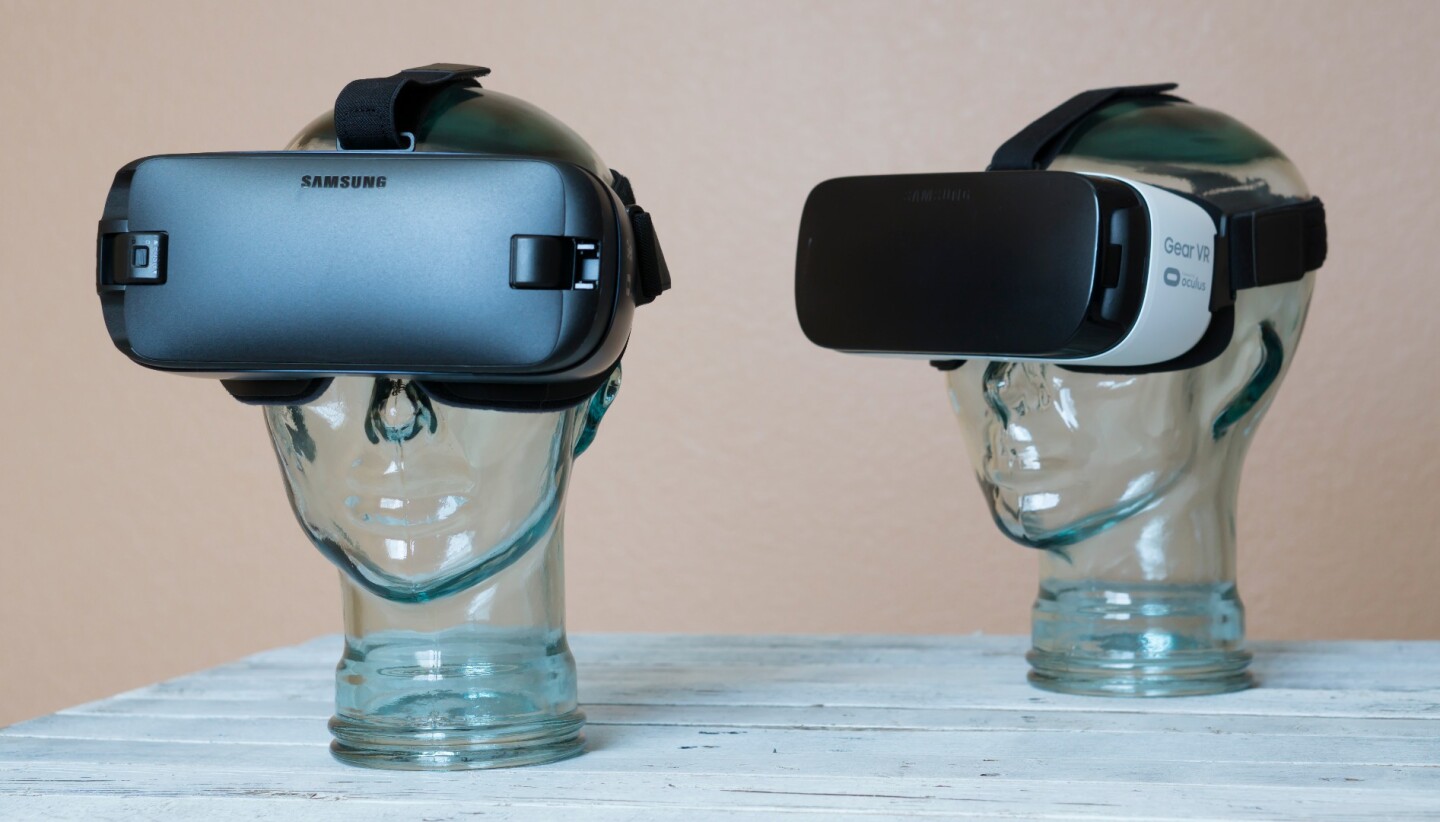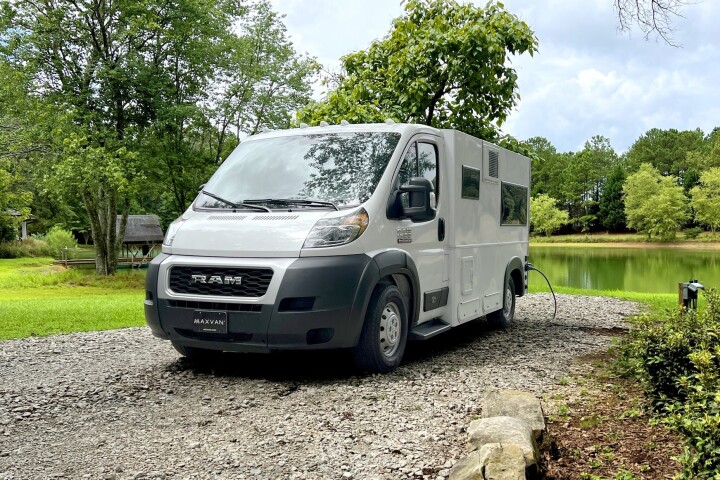With the new Galaxy Note 7 and its USB-C port (a first for the lineup), Samsung needed an updated Gear VR headset to support the new phone/port combo. But this is more than a compatibility update, if only by a little. Read on, as New Atlas reviews the more evolution than revolution 2016 Gear VR.
We aren't going to fire off a bloated, puffed-up review of a simple accessory that, in most ways, is identical to its 2015 predecessor. The core Gear VR experience – insert Samsung flagship into hollow headset, put on, go on amazing journeys – is still here in full force, same excellent app/game selection and all. Instead let's zero in on the few changes in the new model, look at how this chapter flows into the larger VR story and leave you to revisit our original review if you want to know more.
When you first put on the new Gear VR, one of the most obvious changes is that there's more space inside the mask. This gives the headset a roomier feel, but it also has the unexpected happy byproduct of eliminating lens fog. The clouding-up of virtual reality lenses has been an annoyance on every Gear VR up to this point, as well as the Oculus Rift, but this time there's no need for scuba-mask chemical agents. That extra space in the new Gear, along with some openings on the back of the mask, has created enough ventilation to finally solve the pesky lens fog problem.
Despite a lack of obvious progress across the board, the death of lens fog alone may make the new Gear VR worth the US$99 upgrade for owners of the older model (or the early 2015 Innovator Edition).

None of the other changes have had much, if any, effect on our experience. You now have a home button on the right side, in addition to the back button: That could save you a couple seconds when exiting games. The trackpad is now larger, and is probably a little more comfortable to use, though since we recommend using a gamepad whenever possible, that's a minor change at best.
The new Gear VR is also the most versatile. By default, it has a USB-C plug for the Note 7 (and, presumably, future Samsung flagships) but there's a micro-USB plug in the box for the old Gear VR-compatible flagships, including the Galaxy S7, S7 edge, S6 Edge Plus, Note 5, S6 and S6 edge. And it's quick and simple to swap out the plugs, if you're sharing with a friend or family member who uses a different phone with a different port.

And that's pretty much all she wrote as far as changes. Well, there is the fact that it's now blue and black instead of white and black, but we'll spare you the pain of reading five paragraphs about a new color.
This is the first time we've reviewed a Gear VR when it wasn't the best VR headset you can buy, as a couple of PC-tethered beasts known as the HTC Vive and Oculus Rift have launched since our last Gear review. They put the Gear VR into a slightly different context: We already knew the Gear would ultimately play the role of the entry-level gateway drug to the more expensive stuff, but having two high-end headsets like the Vive and Rift in house accentuates that more than in late 2015, when the first consumer Gear launched.
In early 2015, Oculus Product VP Nate Mitchell told us in an interview that he predicted the Gear VR would only take two or three years to catch up with where the Rift was then. The clock is ticking on that projection, and so far it looks like it's going to need a big last-second flurry of innovation to hit that mark.

Compared to today's Rift (which is more or less the same Rift Crescent Bay prototype he was referring to at the time), the Gear VR is far less powerful and lacks positional tracking (it also has no publicly-announced motion controls, but neither did the Rift at the time). For Mitchell's prediction to come to fruition within that three-year window, the 2017 Gear VR would need to get roughly GTX 970 level power (which would mean a huge generational step forward in Qualcomm's mobile chips) and some sort of tracking system (either external or self-contained within the headset). We'd also love to see Oculus Touch-like controllers that "give you hands." As exciting as all of that would be for mobile VR, which already has advantages in lower cost and a lack of wires, it also may be a pretty tall order in just another year or so. Especially when Oculus still needs to keep differentiating the Rift to justify its extra cost.
Not that we need to take every executive prediction at face value, but that comment did, at the time, get us dreaming about how quickly the Gear VR (and mobile VR in general) could advance. So far we've yet to see anything close to that.
Even without those things in today's model, though, the Gear VR can still make for a "magical" entry-point into the world of VR. When you look at the extensive cost and setup required to make the most of the Vive and, to a lesser degree, Oculus Rift, and compare it to the utter simplicity of popping phone into $99 headset and going for a ride, the Gear VR is still a tempting cheapskate alternative.
Most importantly, it has a great selection of games and apps, which is growing all the time (Oculus launches a bunch of new stuff every Thursday, and there's almost always something worth playing in there). Google's Daydream platform will be launching soon, but even with two years' worth of Cardboard content to build on, Daydream still has a lot of catching up to do.

Going back to the Gear VR after using the Vive and Rift for four months, it is a little weird not having positional tracking (that's where external sensors let you lean your body and move around inside virtual worlds). Developers have done a good job of making Gear VR games feel complete using head rotation only, but there were a few times with the new Gear when instinct kicked in and I leaned forward to get a closer look at something, only to be reminded that mobile VR ain't there yet.
We'd love to see tracking come soon to mobile VR, even if it means customers needing to set up a sensor or two. Oculus execs like to frame the Gear VR as the one that you throw into a backpack and bust out at your friend's house, but I mean, really, who does that? Maybe it's a generational thing, but I've had some version of the Gear in house for nearly two years (since the first Innovator Edition) and I've taken them out of the house maybe two or three times. Despite the "mobile" branding, if I'm anything like the norm (hardly a guarantee) I suspect this is still mostly an at-home product for most people.
Perhaps a happy balance point would be battery-powered external body sensors, so when you move from room-to-room or home-to-home to use the Gear, you can easily set them up without hunting around for plugs. But that's a ways down the road, and probably better left to people who make VR gear for a living.

What we see today is nearly the same as the last Gear VR – don't expect much of a difference – but the roomier feeling and death of Willie Nelson-tour-bus-grade lens fog make it worth looking at. For just $99, anyone who owns an old Gear VR should consider the upgrade.
And if you a) own a recent Samsung flagship, b) don't yet have a Gear, and c) are remotely interested in VR, we highly recommend taking the plunge. VR is going to go to all sorts of fantastic new places in the future, but today it succeeds brilliantly at seemingly putting you inside video games and 360-degree videos. The new Gear VR doesn't do this as well as the Vive or Rift, but it is a dirt-cheap way of getting a taste (for Galaxy owners anyway) .
The new Gear VR is available now. For more on the core concept, you can revisit our 2015 Gear VR review.
Product page: Samsung











